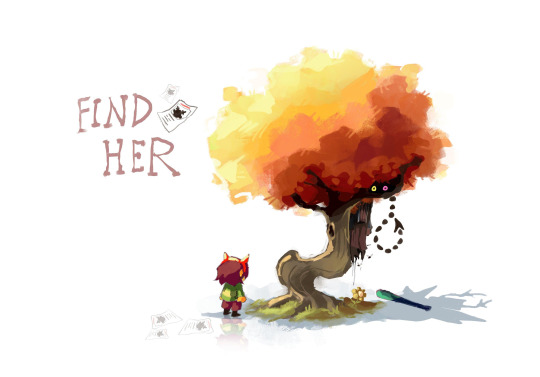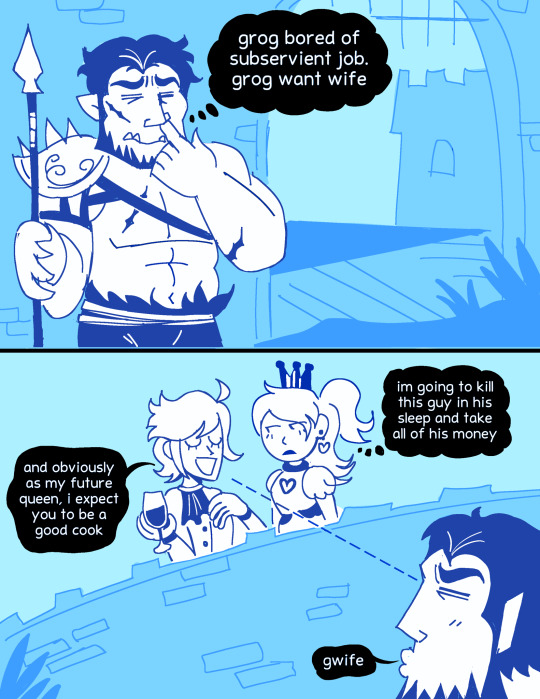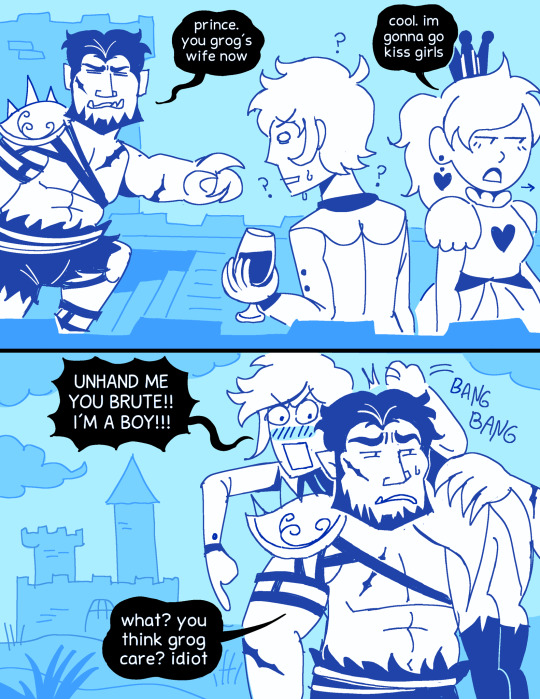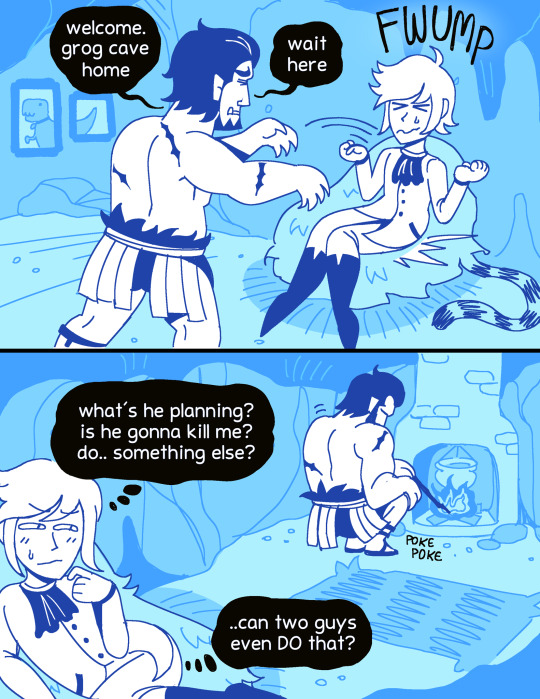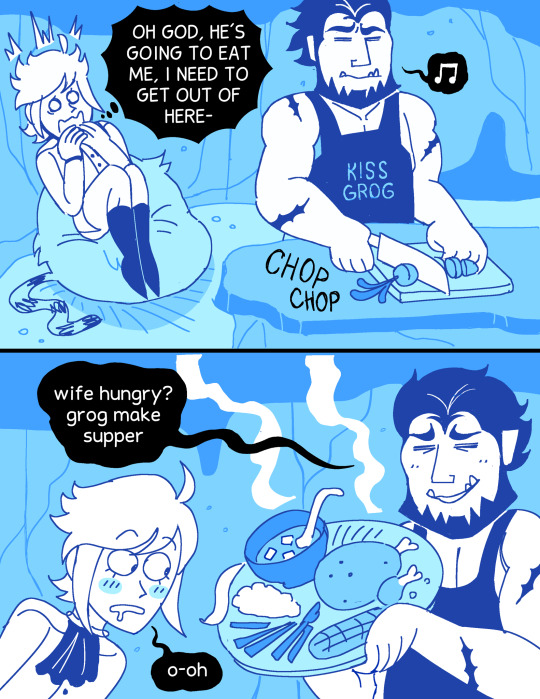It's all downhill from here - he/him - followers who don't ever post will be blocked and flagged
Last active 60 minutes ago
Don't wanna be here? Send us removal request.
Text
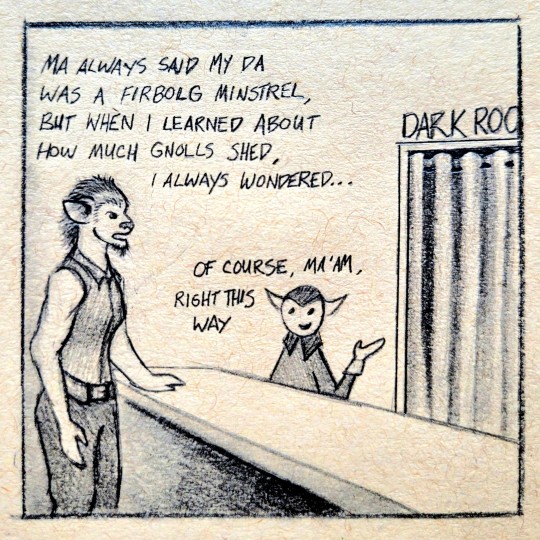

put those racist swords to good use
(parts 1 and 2)
10K notes
·
View notes
Text








LABYRINTH (1986) | Dir: Jim Henson
2K notes
·
View notes
Text
As I keep shouting into the void, pathologizers love shifting discussion about material conditions into discussion about emotional states.
I rant approximately once a week about how the brain maturity myth transmuted “Young adults are too poor to move out of their parents’ homes or have children of their own” into “Young adults are too emotionally and neurologically immature to move out of their parents’ homes or have children of their own.”
I’ve also talked about the misuse of “enabling” and “trauma” and “dopamine” .
And this is a pattern – people coin terms and concepts to describe material problems, and pathologization culture shifts them to be about problems in the brain or psyche of the person experiencing them. Now we’re talking about neurochemicals, frontal lobes, and self-esteem instead of talking about wages, wealth distribution, and civil rights. Now we can say that poor, oppressed, and exploited people are suffering from a neurological/emotional defect that makes them not know what’s best for themselves, so they don’t need or deserve rights or money.
Here are some terms that have been so horribly misused by mental health culture that we’ve almost entirely forgotten that they were originally materialist critiques.
Codependency What it originally referred to: A non-addicted person being overly “helpful” to an addicted partner or relative, often out of financial desperation. For example: Making sure your alcoholic husband gets to work in the morning (even though he’s an adult who should be responsible for himself) because if he loses his job, you’ll lose your home. https://www.nytimes.com/2022/07/08/opinion/codependency-addiction-recovery.html What it’s been distorted into: Being “clingy,” being “too emotionally needy,” wanting things like affection and quality time from a partner. A way of pathologizing people, especially young women, for wanting things like love and commitment in a romantic relationship.
Compulsory Heterosexuality What it originally referred to: In the 1980 in essay "Compulsory Heterosexuality and Lesbian Existence," https://www.journals.uchicago.edu/doi/abs/10.1086/493756 Adrienne Rich described compulsory heterosexuality as a set of social conditions that coerce women into heterosexual relationships and prioritize those relationships over relationships between women (both romantic and platonic). She also defines “lesbian” much more broadly than current discourse does, encompassing a wide variety of romantic and platonic relationships between women. While she does suggest that women who identify as heterosexual might be doing so out of unquestioned social norms, this is not the primary point she’s making. What it’s been distorted into: The patronizing, biphobic idea that lesbians somehow falsely believe themselves to be attracted to men. Part of the overall “Women don’t really know what they want or what’s good for them” theme of contemporary discourse.
Emotional Labor What it originally referred to: The implicit or explicit requirement that workers (especially women workers, especially workers in female-dominated “pink collar” jobs, especially tipped workers) perform emotional intimacy with customers, coworkers, and bosses above and beyond the actual job being done. Having to smile, be “friendly,” flirt, give the impression of genuine caring, politely accept harassment, etc. https://weld.la.psu.edu/what-is-emotional-labor/ What it’s been distorted into: Everything under the sun. Everything from housework (which we already had a term for), to tolerating the existence of disabled people, to just caring about friends the way friends do. The original intent of the concept was “It’s unreasonable to expect your waitress to care about your problems, because she’s not really your friend,” not “It’s unreasonable to expect your actual friends to care about your problems unless you pay them, because that’s emotional labor,” and certainly not “Disabled people shouldn’t be allowed to be visibly disabled in public, because witnessing a disabled person is emotional labor.” Anything that causes a person emotional distress, even if that emotional distress is rooted in the distress-haver’s bigotry (Many nominally progressive people who would rightfully reject the bigoted logic of “Seeing gay or interracial couples upsets me, which is emotional labor, so they shouldn’t be allowed to exist in public” fully accept the bigoted logic of “Seeing disabled or poor people upsets me, which is emotional labor, so they shouldn’t be allowed to exist in public”).
Battered Wife Syndrome What it originally referred to: The all-encompassing trauma and fear of escalating violence experienced by people suffering ongoing domestic abuse, sometimes resulting in the abuse victim using necessary violence in self-defense. Because domestic abuse often escalates, often to murder, this fear is entirely rational and justified. This is the reasonable, justified belief that someone who beats you, stalks you, and threatens to kill you may actually kill you.
What it’s been distorted into: Like so many of these other items, the idea that women (in this case, women who are victims of domestic violence) don’t know what’s best for themselves. I debated including this one, because “syndrome” was a wrongful framing from the beginning – a justified and rational fear of escalating violence in a situation in which escalating violence is occurring is not a “syndrome.” But the original meaning at least partially acknowledged the material conditions of escalating violence.
I’m not saying the original meanings of these terms are ones I necessarily agree with – as a cognitive liberty absolutist, I’m unsurprisingly not that enamored of either second-wave feminism or 1970s addiction discourse. And as much as I dislike what “emotional labor” has become, I accept that “Women are unfairly expected to care about other people’s feelings more than men are” is a true statement.
What I am saying is that all of these terms originally, at least partly, took material conditions into account in their usage. Subsequent usage has entirely stripped the materialist critique and fully replaced it with emotional pathologization, specifically of women. Acknowledgement that women have their choices constrained by poverty, violence, and oppression has been replaced with the idea that women don’t know what’s best for themselves and need to be coercively “helped” for their own good. Acknowledgement that working-class women experience a gender-and-class-specific form of economic exploitation has been rebranded as yet another variation of “Disabled people are burdensome for wanting to exist.”
Over and over, materialist critiques are reframed as emotional or cognitive defects of marginalized people. The next time you hear a superficially sympathetic (but actually pathologizing) argument for “Marginalized people make bad choices because…” consider stopping and asking: “Wait, who are we to assume that this person’s choices are ‘bad’? And if they are, is there something about their material conditions that constrains their options or makes the ‘bad’ choice the best available option?”
8K notes
·
View notes
Text

























TNG text posts part 5 feat. DS9 era O'Brien
7K notes
·
View notes
Text
Frodo Didn’t Fail
The climactic scene of The Lord of the Rings, when Frodo and Sam reach the Cracks of Doom, is one of my favorite scenes in all of literature. So I was very interested a little while back when noted Tolkien scholar Stephen Colbert laid out a neat little analysis of the scene. Frodo seems to fail at his appointed task – rather than throwing the ring into the fire, he claims it for himself, and the ring is only destroyed by the coincidental intervention of Gollum. Colbert then notes that Gandalf should have known that Frodo would fail. Back in the second chapter, Frodo demonstrated to Gandalf his inability to throw the ring into the much cooler fires of his own hearth, after having only possessed the ring for a few hours. Therefore, one may assume, Gandalf must have intended for one of the other members of the Fellowship to intervene and ensure the ring’s destruction.
Colbert’s analysis is clever, in the same way that the theory that Gandalf had intended all along to use the eagles to reach Mordor is clever. In its cleverness, though, I think such analyses risk treating LotR as a D&D campaign and thus losing sight of the real literary themes of the story.
One of Tolkien’s key themes is the Augustinian view of evil. Most genre fiction takes a decidedly Manichean view of evil – a view that holds that evil and good are two great opposing forces in the world, like the light and dark sides of The Force. In a Manichean view, good must triumph by opposing evil, either to eradicate it or to restore a balance to the universe.
Manichean views of evil lead to a very common type of climax to stories: the contest of wills. Our hero confronts the villain, and through superior courage, grit, love, or what-have-you, they overcome the villain and their evil power. It’s Harry going wand-to-wand with Voldemort, Thomas Covenant laughing at Lord Foul, Meg breaking IT’s hold over Charles Wallace, Luke facing down Vader and Vader facing down the Emperor.
Any other writer could have given us a very typical Manichean Cracks of Doom scene. Frodo approaches the fire, and the ring’s temptation overtakes him. He puts the ring on and begins to claim it. But a tiny voice somewhere deep inside him insists that this is wrong. Sam cries out, and thinking about Sam’s love and devotion rekindles a spark in Frodo. His Hobbitish desire for food and good cheer wells up, and he tears the ring off and throws it into the fire. A dramatic ending and a nice echo of the moral of The Hobbit.
But that’s not what happens. Frodo’s goodness – even the innocent goodness of a little old Hobbit – can’t go toe-to-toe with Sauron’s evil. Indeed, Isildur proved it. He defeated Sauron by opposing him with the force of good, and defeated him. But Isildur couldn’t destroy the ring, and within the year it had destroyed him.
Tolkien holds instead to an Augustinian view of evil. Evil, according to St. Augustine, is not a force of its own, but rather is the absence or corruption of good. We see this most explicitly in the idea that Morgoth and Sauron can’t create anything of their own, but only corrupt and warp what has been created by others. We also see it when Gandalf and Galadriel describe what would happen if they took the ring – it would warp their own desire to do good until they became evil.
An Augustinian climax can’t involve a contest of wills between good and evil. In an Augustinian world, evil can only exist by leeching off of good. So evil must be given an opportunity to destroy itself, much like the self-defeating band of thieves described by Plato (on whose philosophy Augustine drew heavily). Good wins by renouncing evil, not by overcoming it.
And that’s exactly what happens at the Cracks of Doom. The ring isn’t destroyed because Frodo’s force of good overcame the ring’s evil. Nor is Gollum’s intervention a coincidence or deus ex machina (like the series of disarmings that happened to make Harry the master of the Elder Wand). Rather, the ring’s evil collapsed in on itself by drawing Gollum. The very corruption of Gollum that enabled the ring to escape the river drove him to wrestle desperately with Frodo for it and ultimately fall to his doom, ring in hand.
An Augustinian view of evil has definite moral implications, which are also shown throughout The Lord of the Rings. A Manichean world is a consequentialist world. To defeat the forces of evil, we need to think strategically. Sometimes we may even need to indulge in a little short-term evil in order to be able to achieve the greater good. But an Augustinian world can’t allow that kind of pragmatic approach. In an Augustinian world, any compromise with evil can only strengthen it, giving it an infusion of good that delays its self-destruction. An Augustinian world demands a deontological ethic, doing the right thing regardless of the outcome.
Again and again in The Lord of the Rings, we see that strategically pursuing the greater good fails, while remaining true to moral principles succeeds even when it looked foolish. On the cautionary side, we have Saruman and Denethor. Though they may point to the palantir as an excuse, they each ultimately made a thoroughly reasonable choice in the face of Sauron’s overwhelming advantage – to ally with him while playing the long game, or to give in to despair. Our heroes, on the other hand, repeatedly make foolish decisions based on hope. Aragorn is a good example – he decides to pursue Merry and Pippin because he owes them protection even though Frodo is the one who holds the fate of the world in his hands. Later, he decides to make a suicide attack on the Morannon rather than hunkering down in Minas Tirith, in the hopes of Frodo’s quest succeeding.
But the most important instance of doing the right thing despite the consequences comes from Frodo himself: he refuses to kill Gollum. Killing Gollum would have been an eminently reasonable idea – he’s a slinker and a stinker, and we know that he never redeemed himself or turned over a new leaf. Indeed, his main accomplishments were to lead Frodo and Sam into a death trap, then to try to kill them with his own hands at the Cracks of Doom. Both Sam and Faramir were right when they said that killing Gollum would have been a good idea!
But Frodo showed Gollum pity and spared his life because it was the right thing to do. And just like Gandalf could see Frodo’s unwillingness to destroy the ring back in Bag End, he also addressed this very issue. He instructed Frodo:
Frodo: It’s a pity Bilbo didn’t kill him when he had the chance.
Gandalf: Pity? It was pity that stayed Bilbo’s hand. Many that live deserve death. Some that die deserve life. Can you give it to them, Frodo? Do not be too eager to deal out death in judgment. Even the very wise cannot see all ends. My heart tells me that Gollum has some part to play yet, for good or ill before this is over. The pity of Bilbo may rule the fate of many.
And in the end, that pity was what saved the world. Frodo’s pity made it possible for Gollum to be there at the Cracks of Doom to take the ring. Frodo refused to give in to the small, reasonable evil of killing Gollum, and so he left the great evil of the ring exposed to destroy itself. That was Gandalf’s backup plan, not Aragorn’s strength to take the ring and destroy it. And so Frodo didn’t really fail. He succeeded at his quest back when he saved Gollum’s life, when he did the right thing even though it seemed foolish.
25K notes
·
View notes
Text
I do not think it's the same place as the Sharom because the world's most advanced research center probably isn't part of a rustic tourist destination.
Not Greenland or anything that far up - the world map makes it clear that the Blight isn't *that* far north. I would personally assume something in the Baltic Sea since I tend to think that Randland is a mutated Europe and Scotland is way too far west to be Shayol Ghul under that scenario and also the Hebrides and what not out there are kinda crappy. Something close to Gotland though, perhaps an island that doesn't exist yet but will in the nearish future due to the Baltic Sea rebounding, seems plausible enough. This also helps explain how Shayol Ghul was once an island but the Blasted Lands it's in were where the War of the Power hit hardest - the Baltic Sea is very narrow, so there would be many adjacent targets to hit, whereas northern American islands would likely be underpopulated and Scotland's islands are rather isolated.
Demandred approaches Shayol Ghul:
In what was now called the Age of Legends, this had been an idyllic island in a cool sea, a favorite of those who enjoyed the rustic.
We thinking this was the same place as the Sharom?
Separately, which northern island should this be? Perhaps an island in Scotland? Or one in northern Canada? Or perhaps it's Greenland?
4 notes
·
View notes
Text
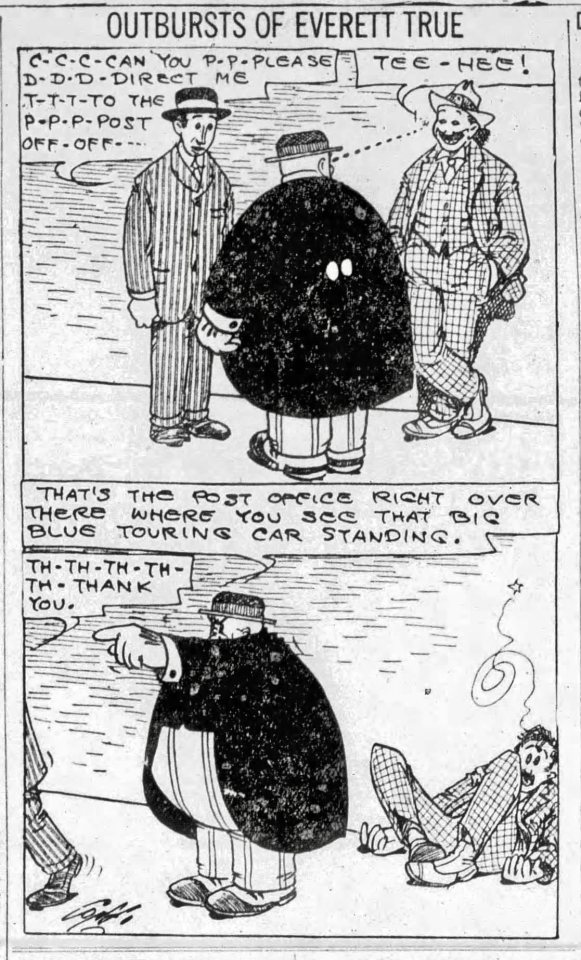
The Outbursts Of Everett True (June26th1919)
Art by AD Condo
10K notes
·
View notes
Text

In honour of disability pride month, we made a disability Pride Knight! Stay proud! ⚔️🌈
75K notes
·
View notes
Text
A few years ago while trying to find ways to commit suicide as painlessly as possible, I came across a PDF of Dr. Paul Quinnett's The Forever Decision. Thinking it might go into actual methods of suicide (I read an article once that actually did that and was trying to find it again) I started to read it, and I think I only got about two pages in before I was crying too much to actually see the words.
I downloaded the PDF to my hard drive and I open it again whenever I'm feeling too suicidal to do much else, but not enough to start booking a ride to the hospital. And every time without fail I only go up to a few pages before backing off and choosing to live another day just because suicide suddenly seems even more unbearable than whatever the hell upset me in the first place.
All the book really does is [I'm pulling a summary from GoodReads here as, again, I've read no more than 5 pages] "discusses the social aspects of suicide, the right to die, anger, loneliness, depression, stress, hopelessness, drug and alcohol abuse, the consequences of a suicide attempt, and how to get help."
But it also starts with the author kindly asking the reader to complete the book before going through with anything, and for some reason I'm compelled to really just try to read it all before finalizing everything. Despite not yet completing it (hopefully never will) I think I can safely say it's saved my life at least a few times now.
It's intentionally legal to copy and redistribute this book to keep it as accessible as possible, and it's very easy to find, but here's a link for it anyways.
44K notes
·
View notes

